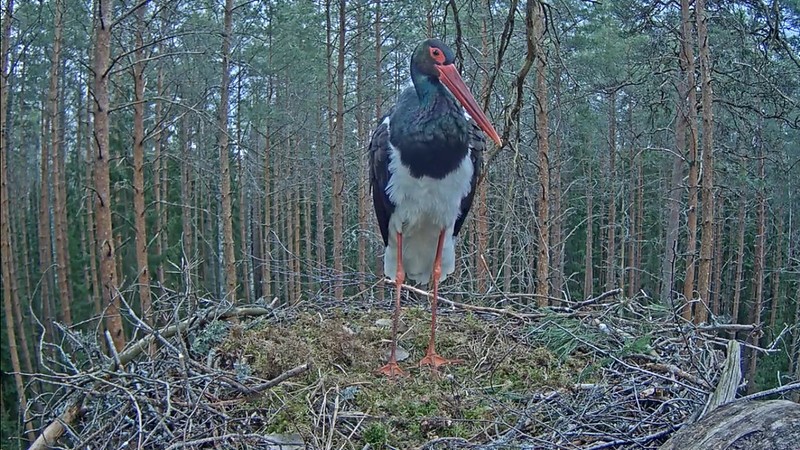Black Stork camera 2025 - Kergu
Kotkaklubi, www.kotkas.ee
Screenshot Swenja, LK forum
live stream | news | forum
Direct stream from black stork nest and all news about it.
Kotkaklubi, www.kotkas.ee
Screenshot Swenja, LK forum
live stream | news | forum
Kotkaklubi, www.kotkas.ee
Screenshot Swenja, LK foorum
Nest Camera, www.kotkas.ee
Screenshots from maps: Francesca, LK forum
Isaslind Karl is still wandering in Turkey.
Black stork Ciconia nigra
The male black stork is the first to arrive at the nesting site in Karula.
Currently, Karl is migrating in Turkey, having completed a 4600 km journey since the beginning of the autumn migration. His migration will now need to be monitored with greater attention, as he will soon pass through the western part of Ukraine after crossing Romania.
Text: Urmas Sellis, Triin Leetmaa
Webcam screenshot from Liz, LK forum
The smaller can no longer stand up.
Black Stork Ciconia nigra
It all started last night, when the youngest hatchling, who probably hatched later, could not want to get up as his/her siblings. A certain sluggishness in behavior could be noticed a little earlier, but it could also be blamed on the heat.
Kotkaklubi, www.kotkas.ee
Screenshot Soolo, LK foorum
direct stream | news | forum
Black stork Ciconia nigra
The Black Stork nest is situated in Jõgeva County in Estonia. We have known this breeding territory since the late 1990s, when black storks successfully nested here for many years.
Kotkaklubi, www.kotkas.ee
direct stream | news | forum
Black stork Ciconia nigra
The Black Stork nest is situated in Karula National Park, southern Estonia.
Text: Urmas Sellis
Image from camera: Michi, LK forum

The male bird arrived at the nest yesterday, April 9.
Summary in Estonian written by Urmas Sellis
Estonian text posted 03.09.2019
In March, before installing the web camera in the nest, we waited impatiently for the start of male bird Karl’s migration. Karl did have a tracking device but the lack of GSM cover in southern Sudan kept us in the dark during four months, from mid-November 2018 when Karl reached his wintering site. However, on March 16 during the spring migration Karl’s locations were registered and all seemed to be in order. We had nearly two weeks of time to install the camera at the nest. The nest could be seen in the web camera from March 24 onwards.
Copyright 2025 · Looduskalender
Designed by Zymphonies
We also use analytics & advertising services. To opt-out click for more information.